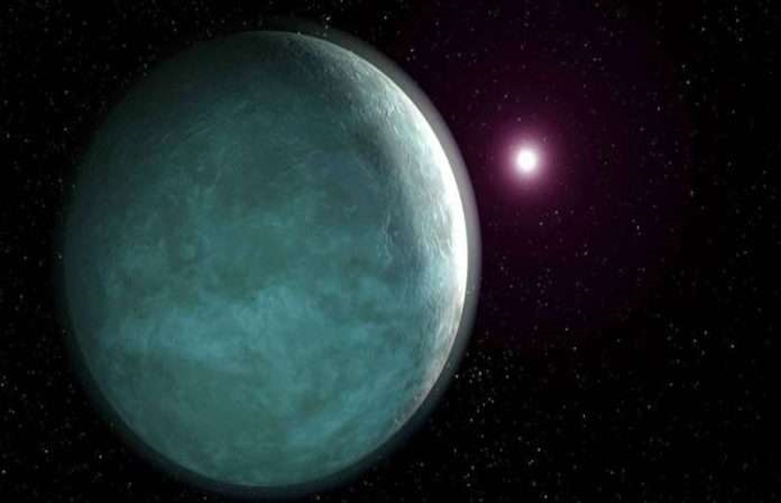About five times the size of Earth.. Scientists monitor the brightest planets outside the solar system

Scientists have spotted the brightest planet ever outside the solar system, according to a study published Monday, the results of which revealed a burning world in which metal clouds rain droplets of titanium.
This strange exoplanet, located more than 260 light-years from Earth, reflects 80% of the light of its host star, according to new observations from the European Cubes space telescope.
This is the first exoplanet to match the brightness of Venus, which is the brightest object in our planet's night sky, with the exception of the Moon.
This exoplanet discovered in 2020, which is the size of Neptune, bears the name "LTT9779b" (LTT9779b), and it orbits its star in just 19 hours.
Because of this proximity, the temperature of his luminous face reaches 2,000 degrees, a temperature that is too high for clouds to form. However, the reflection of LTT 9779b indicates clouds.
The matter was a "real mystery," according to Vivien Parmentier, a researcher at the Côte d'Azur Observatory and co-author of the study, the results of which were published in the journal Astronomy and Astrophysics. Then, "the researchers looked at the formation of these clouds in the same way that condensation occurs in the bathroom after a hot shower," the researcher said in a statement.
As in the case of the superheated shower effect, the burning stream of metal and silicate - the material from which glass is made - oversaturates LTT 9779b's atmosphere until metal clouds form.

But the planet concealed other surprises. In the past, the only exoplanets known to orbit their star very quickly (in less than 24 hours) were either gas giants 10 times larger than Earth, or rocky planets half the size of Earth.
The exoplanet "LTT 9779b" is about five times the size of Earth, and is located in an area that astronomers call the "hot Neptune desert", where "planets of this size are not supposed to exist", according to Parmentier.
In addition, astronomers expected that such a planet would "see its atmosphere being blown away by its star," which is very close to it, "leaving bare rocks behind."
Scientists have found the explanation for this, which is that "the metal clouds of" LTT 9779b "work like a mirror", as it reflects light and prevents the atmosphere from volatilization, according to Maximilian Guenther, chief scientist of the "Cubes" project within the European Space Agency.
The clouds act "like a shield," Guenther told AFP, like the shields that protect "the spacecraft in the old Star Trek episodes."
The researcher noted that this represented an "important step" by showing how a planet the size of Neptune could survive in a similar environment.

The European Space Agency's "Cubes" space telescope was sent in 2019 to characterize the planets discovered outside our solar system. The telescope measured the reflective power of LTT 9779b by comparing the light before and after the exoplanet disappeared behind its star.
Source: websites

